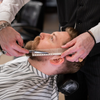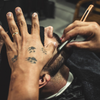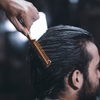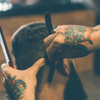The best way to be a good barber
Learn the essential skills to become a successful barber! Our barber lessons provide comprehensive instruction on all aspects of men's hair styling and grooming, empowering you with top-quality tools and techniques. Get everything you need to elevate your craft today!
Learn from the best, become the best
Learn how to become a master barber with the help of experienced professionals. Get hands-on guidance on technique, product knowledge and customer service, as well as tips on business management and growth. With our lessons you can hone your skills and become the best in the field of barbering. Unlock your potential today!
Price list
Our Courses

Hair Coloring
Learn to apply a range of professional hair coloring techniques to achieve vibrant and natural-looking results.
100USD

Hair Styling
Discover new tools and techniques to create modern and stylish looks.
100USD

Hair Shaving
Learn how to perfect the art of barbering and create the look you want with expert tuition and advanced tools.
100USD

Hair Cutting
Get expert advice and tips from experienced barbers in our one-on-one lessons.
100USD

Facial Grooming
Learn the fundamentals of facial grooming from expert barbers in a variety of styles.
100USD

Beard Trimming
Understand the nuances of beard trimming from expert barbers to achieve the look you desire.
100USD
Frequently asked questions
- All Questions
- All Questions
- All Questions
What are the basic tools for cutting hair?
The basic tools for cutting hair include a pair of scissors, a comb, clippers and a razor.
What is the difference between a barber and a hairdresser?
The main difference between a barber and a hairdresser is that barbers are generally trained to cut short, traditional men’s haircuts, while hairdressers are usually trained to cut longer, more creative styles.
What is the best way to begin a haircut?
The best way to begin a haircut is to start by combing the hair to remove any tangles and to identify the areas of the hair that need to be cut.
How often should scissors be sharpened?
Scissors should be sharpened at least once every six months in order to ensure that the blades remain sharp and effective.
What are the most important safety considerations when cutting hair?
The most important safety considerations when cutting hair include wearing protective gloves, eye protection, and a mask to protect against airborne particles.
What is the difference between a fade and a taper?
The main difference between a fade and a taper is that a fade typically involves cutting the hair gradually shorter as you move up the head, while a taper involves cutting the hair gradually longer as you move up the head.